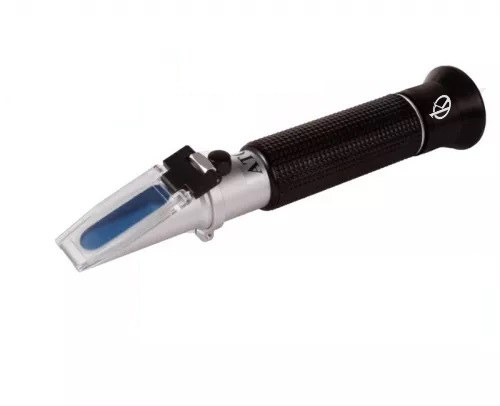Salinity refractometers are critical tools in diverse fields, helping to measure the salinity levels of liquids with precision. Kalstein, a leader in laboratory equipment, offers the YR05887 and YR05914 models, showcasing cutting-edge technology and reliable performance. Meanwhile, the Aichose TS-391 provides a competitive option in the same market. This article explores the nuances of these refractometers, highlighting their capabilities and differences. With a focus on innovation and quality, we aim to guide you toward the best choice for your needs.
Kalstein’s Salinity Refractometers YR05887 and YR05914 models are designed for precision and ease of use. These devices offer advanced features such as automatic temperature compensation, which ensures accurate readings regardless of temperature fluctuations. Compact and robust, they are ideal for both laboratory and field applications, offering a measuring range that covers the needs of most salinity measurement tasks. Meanwhile, the Aichose Salinity Refractometer TS-391 delivers solid performance, boasting simplicity and efficiency, ideal for general applications in aquarium monitoring and food preparation.
| Feature | Kalstein YR05887/YR05914 | Aichose TS-391 |
|---|---|---|
| Automatic Temperature Compensation | Yes | No |
| Measurement Range | 0-100% Salinity | 0-28% Salinity |
| Accuracy | ±0.2% | ±0.2% |
| Weight | 0.5 kg | 0.3 kg |
| Material | Durable Aluminium Alloy | Plastic and Aluminium |
How They Work
The YR05887 and YR05914 models from Kalstein utilize a streamlined prism and lens system that directs light through the liquid sample. As light passes through, it bends or refracts based on the salinity level, which is then measured and displayed. These models also feature an automatic temperature compensation mechanism that ensures stable readings despite environmental changes.
The Aichose TS-391 employs a similar principle but lacks the automatic temperature compensation feature. The user manually calibrates the device to account for temperature variations, which may be adequate for applications with stable ambient conditions.
What Are They Used For?
The Salinity Refractometers YR05887 and YR05914 by Kalstein are versatile tools used widely in marine research, aquaculture, and food production industries. They are designed to provide accurate salinity measurements, which are crucial for maintaining optimal environments in aquariums, ensuring food safety and quality, and conducting scientific research.
Types
Salinity refractometers generally come in two types: manual and digital. The models from Kalstein are highly precise manually operated devices with automated features like temperature compensation, setting them apart from typical manual refractometers. The Aichose TS-391 falls under the manual category, ideal for less temperature-sensitive applications.
Market Pricing
The price range for salinity refractometers varies significantly based on features and brand. The Kalstein YR05887 and YR05914 models are competitively priced at approximately $50 to $100, reflecting their advanced features and durability. In contrast, the Aichose TS-391 is available for around $25 to $40, offering a more budget-friendly option for basic applications.
Frequently Asked Questions
How do I calibrate a salinity refractometer?
To calibrate, use a solution with a known salinity level. Adjust the calibration screw until the reading matches the solution’s value.
What is the benefit of automatic temperature compensation?
Automatic temperature compensation adjusts measurements to account for temperature variations, providing consistent and accurate readings.
Can these refractometers be used for measuring sugar content?
Although designed for salinity, some refractometers can measure other properties, such as sugar content, if specified by the manufacturer.
Advantages and Disadvantages
The Kalstein YR05887 and YR05914 models stand out for their precision and reliable features such as automatic temperature compensation and durable build. These advantages ensure dependable performance in varied conditions but come with a higher price. In comparison, the Aichose TS-391 offers simplicity and cost-effectiveness but may require frequent manual calibration and is less suited for fluctuating temperature conditions.
Using the Product in the Field
In practical scenarios, the Kalstein refractometers are favored for their robustness and accuracy. For example, in aquaculture, they help monitor aquatic environments to ensure optimal salinity for fish health. The units’ resiliency makes them perfect for fieldwork in remote locations. Conversely, the Aichose TS-391 is better suited for controlled environments where regular manual calibration can be performed without inconvenience.
Recommendations
To get the most out of your salinity refractometer, regularly clean the prism and lens with distilled water to avoid buildup that can skew measurements. Utilize the provided calibration tools for periodic checks, especially when shifting between significantly different environments.
If you are looking for a fusion of innovation and quality, you have come to the right place. At Kalstein, we offer you the luxury of exploring our exclusive catalog of laboratory equipment. We manufacture each piece of equipment with a level of excellence. Our intuitive and efficient online purchasing channels are designed for your convenience, ensuring the most friendly prices. Don’t hesitate any longer; we bring science to life, and it’s time for you to become part of our community. https://kalstein.iq/product/salinity-refractometers-yr05887-yr05914/

